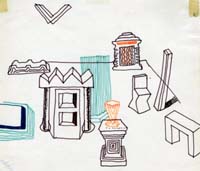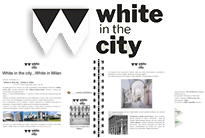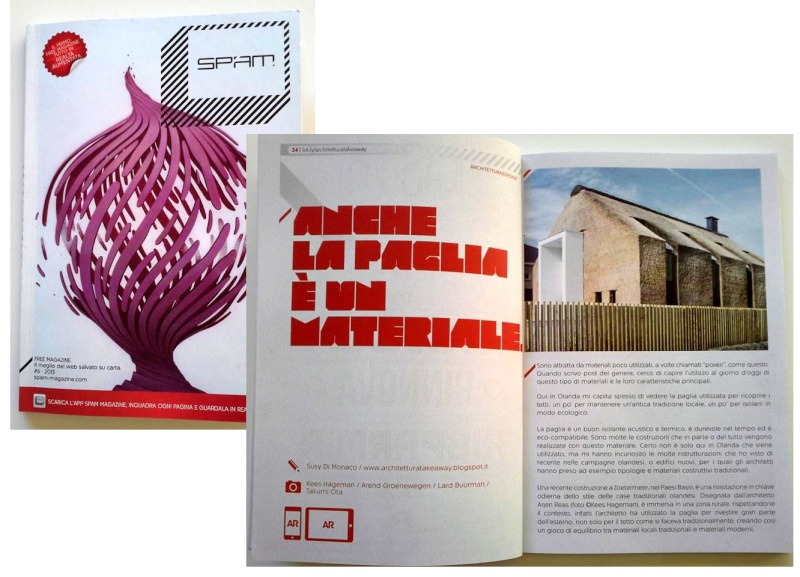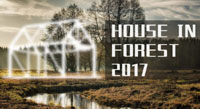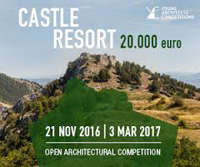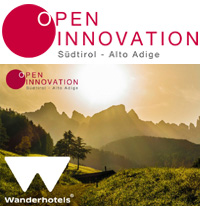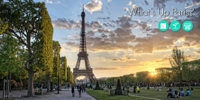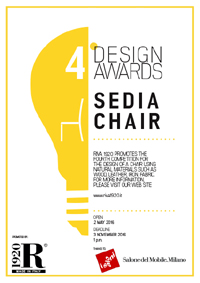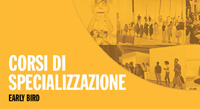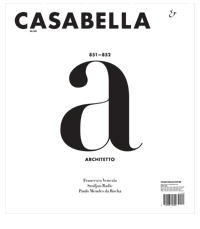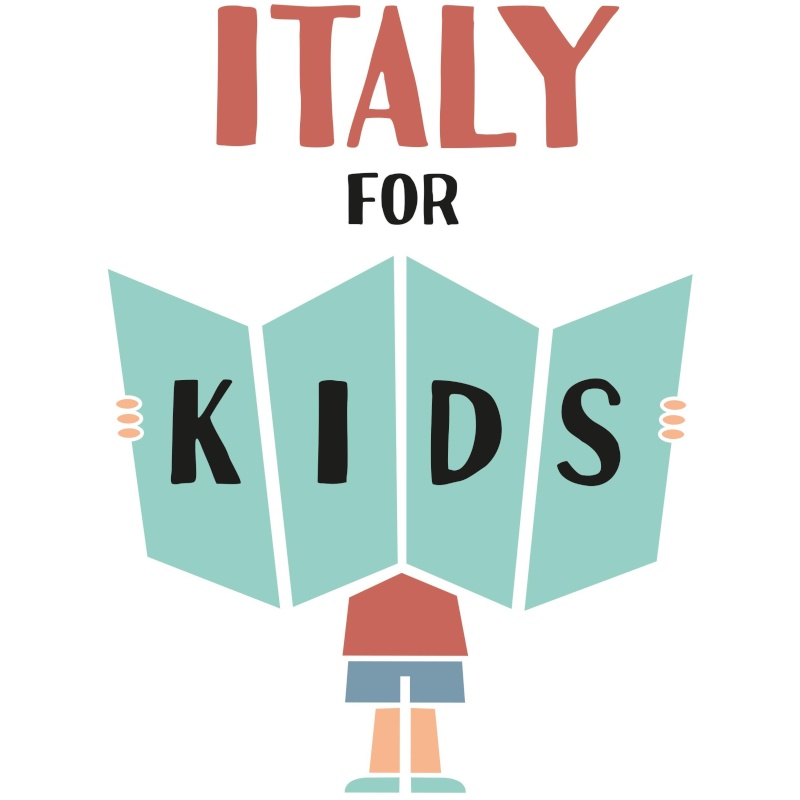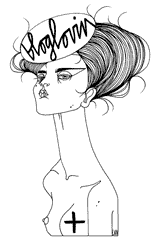Devo dire che l'architettura nordica mi ha sempre attirato, e pensare di redarre un post sull'architettura norvegese mi ha coinvolta da subito.
I norvegesi hanno un gran rispetto verso la natura ed il paesaggio, e la loro architettura si inserisce in maniera particolare nel contesto naturale.
This post is a special thanksgiving to the Norwegian visitors of the blog, as I noticed that they are the majority of visitors and it seemed nice to dedicate them a few lines. I must say that the Nordic architecture always attracted me, and thinking about writing a post on the Norwegian architecture immediately involved me.
The Norwegians have a great respect for nature and the landscape and their architecture fits in a particular way in the natural context.
Ho scelto solo alcuni progetti, giusto per mettere in evidenza alcuni aspetti che ho notato ripetersi nell'architettura norvegese, e mi pare giusto condividere con voi queste mie considerazioni personali.
I chose only a few projects, just to highlight a few issues that I noticed repeated in the Norwegian architecture, and I think it right to share with you these personal considerations of mine.
Partendo dai volumi, ho notato che nella maggior parte dei casi essi sembrano spezzarsi ed aprirsi secondo una rotazione.
Le forme dei loro edifici appaiono in alcuni casi spigolose, con utilizzo di forme triangolari e linee diagonali, in altri casi sono sinuose e curve.
Sembra una contraddizione, invece è frutto di uno studio sulle condizioni climatiche, ad esempio a volte si trovano tagli diagonali delle coperture o, sul perimetro dei volumi, gli edifici sembrano avere delle pieghe come degli origami, soluzioni che servono per contrastare il forte vento o la neve.
Oppure si vedono tagli diagonali alle entrate di edifici, sempre per risolvere il probema dell'accumulo di neve.
Starting from the volumes, I noticed that in most cases, they appear to break and open up following a rotation.
The shapes of their buildings in some cases look spiky, with a diffuse use of triangular shapes and diagonal lines, in other cases they are sinuous and curved.
It looks like a contraddiction, there is a study about the weather conditions though, like some diagonal cuts of the rooftops or, on the perimeter of the volumes, the buildings seem to have folds like origamis, solutions that counter the strong wind or snow.
Or you see diagonal cuts at the building entrances, again to solve the snow accumulation problem.
Un altro aspetto interessante è la scelta della posizione delle aperture, delle finestre e delle grandi vetrate.
Si nota uno studio particolare soprattutto per le soluzioni d'angolo, sia in edilizia pubblica che residenziale e privata.
Le finestre o vetrate sembrano svuotare l'angolo, creando una vista in profondità, una vista prospettica sull'esterno, una soluzione da palcoscenico: chi è dentro vede lo spazio esterno.
La sensazione che ho avuto è come un taglio in angolo, una sforbiciata all'edificio per rompere con la chiusura ermetica ed incorniciare ciò che è fuori.
Altri tipi di vetrate sono quelle collocate nelle pendenze dei tetti, studiate con l'inclinazione giusta per favorire l'entrata della luce.
Another interesting aspect is the choice of the position of the openings of windows.
It is noticeable a special study for corner solutions, both in private residential and public buildings.
Windows seem to empty the angle, creating a view in depth, a perspective on the outside, a stage solution: he who is inside sees the outer space.
The feeling I had was like a cut in the corner, a scissor kick to the building to break its tight sealing and frame what is outside.
Other types of windows are those located in the slope of the roofs, designed with the right inclination to favor the entrance of light.
Spesso alcuni dei punti che ho descritto li ho ritrovati anche in altre architetture scandinave, come a voler affermare una linea comune nell'architettura nordica.
Sembra infatti un aspetto comune l'uso di finestre in angolo, l'utilizzo del legno e del vetro, le forme sinuose contrastate da quelle spigolose, etc.
Often I found some of the points that I described in other Scandinavian architectures, as if to assert a common line for the Nordic architecture.
It seems a common feature the use of windows in the corner, the use of woodand glass, the sinuous forms matched with angular ones, etc.
Un aspetto da considerare anche per capire gran parte dell'operato norvegese, è la loro attività principale: la pesca. Ritroviamo infatti molti interventi di ristrutturazione e sostituzione di vecchi capanni di pescatori, boat-house e darsene.
Il legno di pino è il materiale più utilizzato, il legno delle loro foreste, anche se ultimamente un'azienda di Oslo ha trovato un legno "ecosostenibile" per frenare la deforestazione.
One more aspect to consider in order to understand much of the Norwegian work, is their main business: fishing. We find in fact many renovations and replacements of old fishing huts, boathouses and docks.
The pine wood is the most common material, the wood of their forests, although lately a company from Oslo found a "sustainable" wood to curb deforestation down.
Un esempio di boathouse è il "Naust paa Aure", degli architetti TYIN Tegnestue.
Era una vecchia darsena, un rifugio sul mare, e serviva per la pesca, ma il proprietario, visto il cattivo stato, ha deciso di abbatterla per farla ricostruire, riciclando qualche materiale originale per la nuova costruzione.
An example of a boathouse is "Naust paa Aure", from the architects TYIN Tegnestue.
It was an old dock, a retreat of the sea, and was used for fishing, but the owner, given its poor state, decided to demolish it in order to rebuild it, recycling some original material for the new building.
I vecchi materiali della darsena sono stati riutilizzati ed inseriti, ad esempio, nelle pareti interne.
The old dock materials were reused and included, for instance, in the inner walls.
Photo copyright © Pasi Aalto
via http://www.tyinarchitects.com/works/naust-paa-aure/npa-projectdescription/
Tra altri tipi di ristrutturazioni, vi mostro il recupero di un vecchio fienile-fattoria, "Farm House", riadattato a rifugio, ereditato da una coppia di storici con figli.
La ristrutturazione è stata realizzata dagli architetti Jarmund/Vigsnaes. Era una vecchia fattoria sul lago Mjøsa a Toten, il fienile è stato completamente eliminato, perchè ormai la struttura era fatiscente, ed il legno è stato in parte riutilizzato per il rivestimento della nuova struttura.
Le finestre nel nuovo rifugio hanno una soluzione continua su tutto il perimetro, per garantire luce e una visione a 360º del paesaggio circostante.
Among other types of renovations, I show the recovery of an old barn-farm, "Farm House", converted into a shelter, inherited by a couple of historians with their children.
The renovation was carried out by architects Jarmund/Vigsnaes. It was an old farmhouse on lake Mjøsa in Toten, the barn was completely eliminated, because the structure was crumbling down, and the wood was partially re-used for the coating of the new structure.
The windows in the new shelter have a continuous solution around the whole perimeter, to ensure light and a 360º view of the surrounding landscape.
Photo copyright © Nils Petter Dale JVA
Inserisco di seguito altre strutture che spesso si notano nel landscape norvegese: rifugi in montagna, rifugi vicino ai laghi, cabins, oppure hotel inseriti nel paesaggio.
I also show the following facilities that often are noticed in the Norwegian landscape: mountain lodges, shelters near the lakes, cabins, or hotels embedded within the landscape.
"Split View Mountain Lodge", di Reiulf Ramstad Arkitekter, è un rifugio per vacanze invernali progettato per una famiglia nella località sciistica di Geilo.
È una struttura particolare, con un corpo che si divide in zona notte e zona giorno, si può notare come i volumi sembrano aprirsi ruotando attorno ad un punto.
"Split View Mountain Lodge", by Reiulf Ramstad Arkitekter, is a shelter for winter holidays designed for a family in the ski resort of Geilo.
It is a particular structure, with a body that is divided into a sleeping and a living area, and you can see that the volumes seem to open by rotating around a point.
I grandi finestroni sottolineano l'idea di un rifugio-belvedere panoramico.
La struttura è interamente rivestita in legno di pino naturale del luogo.
The large windows underline the idea of a panoramic refuge.
The structure is entirely covered with natural pine wood from the place.
Photo copyright © Reiulf Ramstad Architects, Søren Nielsen Harder
"Juvet Landscape Hotel" (JSA), degli architetti Jensen & Skodvin Architects, è un hotel costruito ad Alesund, nel Nord Ovest della Norvegia.
Un hotel immerso completamente nel landscape naturale, composto da sette volumi che ospitano le stanze, ogni stanza ha un orientamento diverso, un punto di vista differente: sulle montagne, sul bosco, sul fiume, etc. Le camere sono state progettate per far sentire le persone a contatto con la natura, ad esempio nelle camere da letto si può sentire il rumore dello scorrere del fiume grazie a delle apposite aperture accanto al letto. Gli interni sono abbastanza semplici e minimalisti.
"Juvet Landscape Hotel" (JSA), by Jensen & Skodvin Architects, is a hotel built in Alesund, in the North West of Norway.
A hotel completely immersed in the natural landscape, consisting of seven volumes hosting the guest rooms, each room with a different orientation, a different point of view: towards the mountains, towards the forest, towards the river, etc. The rooms are designed to make people feel in touch with nature, for example in the bedrooms you can hear the noise of the flowing river through expressly made openings beside the bed. The interiors are quite simple and minimalist.
Photo copyright © Jensen & Skodvin Architects
"Cabin at Norderhov", di Atelier Oslo, è un rifugio che affaccia sul lago Steinsfjorden.
Con una pianta a croce che agisce come frangivento, è rivestito in legno e dotato di grandi vetrate orientate verso il lago.
"Cabin at Norderhov", by Atelier Oslo, is a shelter overlooking the lake Steinsfjorden.
With a crossed plan that acts as a windbreak, it is covered with wood and fitted with large windows onto the lake.
Photo copyright © Atelier Oslo, Lars Petter Pettersen
via http://architizer.com/projects/cabin-at-norderhov/
"Square House Veierland" in Nøtterøy, dello studio Reiulf Ramstad Arkitekter, costruita nel 2011, è una sorta di rifugio-casa. A forma quadrata, è immerso in una grande pineta.
Rivestito in legno scuro, ospita al centro uno spazio come una corte, e i vari ambienti si affacciano su questo spazio interno.
"Square House Veierland" in Nøtterøy, by the studio Reiulf Ramstad Arkitekter, built in 2011, is a kind of shelter-house. With its squared shape, it is immersedin a large pine forest.
Clad in dark wood, the center hosts a space like a court, and the various rooms look down on this internal space.
Photo copyright © Reiulf Ramstad Architect
Un'altra opera di Reiulf Ramstad Arkitekter è "Fagerborg Kindergarten".
È un asilo in Fagerborg, Oslo, studiato in modo che l'area di gioco dello spazio esterno, entri a far parte di un grande parco della città. La copertura con le vetrate nelle differenti pendenze e dislivelli, permette alla luce di entrare.
Another work of Reiulf Ramstad Arkitekter is "Fagerborg Kindergarten".
It is a kindergarten in Fagerborg, Oslo, designed so that the playing area of the outer space becomes part of a large city park. The cover with the windows with different slopes and gradients, allows light toenter.
Photo copyright © Reiulf Ramstad Architects,Thomas Bjørnflaten
Questo rifugio degli architetti Fantastic Norway, "Cabin Vardehaugen", sorge su un fiordo a Grøttingen sulla penisola di Fosen.
Il rifugio è stato sagomato per far fronte alle condizioni climatiche come il vento, la neve, etc.
Grazie a questo studio di geometria e clima sono stati ricavati spazi all'aperto come sedute, pedane, e atrio.
This shelter by architects Fantastic Norway, "Cabin Vardehaugen", is located on a fjord in Grøttingen, on the Fosen peninsula.
The shelter was shaped to meet the climatic conditions such as wind, snow, etc.
Thanks to this study of geometry and climate, open spaces such as seats, footrests, and atrium were obtained.
E proprio questi architetti "Fantastic Norway" sono un gruppo dinamico ed originale, che a bordo del loro caravan rosso, con il quale viaggiano, comunicano l'architettura alle persone, utilizzando il caravan come piattaforma mobile per incontri di architettura, workshop, dibattiti, etc. Insomma, di sicuro un modo insolito per coinvolgere le persone all'architettura.
And these architects "Fantastic Norway" are a dynamic and original group, who on board of their red caravan, with which they travel, communicates the architecture to people, using the caravan as a mobile platform for meetings of architecture, workshops, debates, etc. I mean, certainly an unusual way to engage people with architecture.
E vi lascio con il loro motto:
"Ogni città è diversa; ogni luogo è in qualche modo fantastico. Il nostro obiettivo è assorbire questo fatto e attraverso il dialogo trasformarlo in architettura".
And I leave you with their motto:
“Every town is different; every place is in some way fantastic. We aim to embrace this fact and through dialogue transform it into architecture”.





































